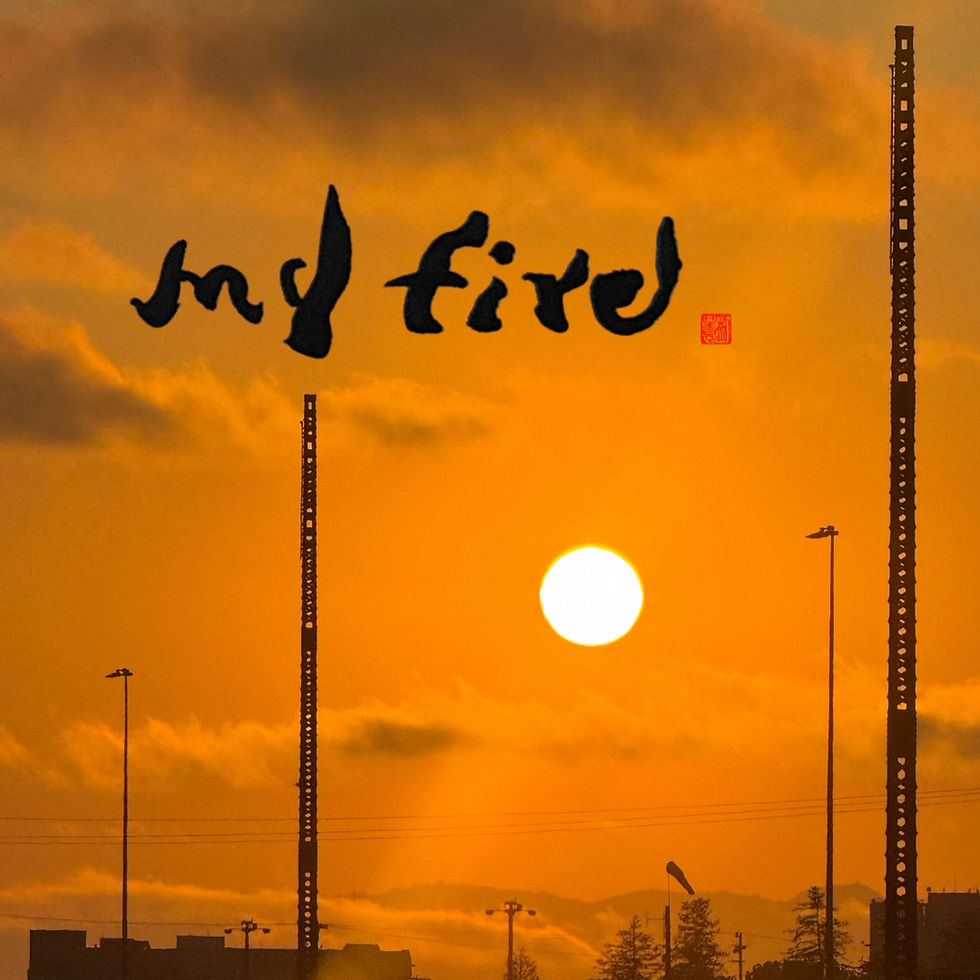Tsunamis & the Pacific Ring of Fire
- CJ Allred

- Dec 5, 2024
- 3 min read
Updated: Feb 26
The Pacific Ring of Fire is a 40,000km earthquake-triggering tectonic belt of volcanoes that not only physically connects California and Japan but also connects them culturally.

Because of the Pacific Ring, both Japan and California experience the threat of tsunamis. Tsunamis are powerful, natural disasters that can cause significant destruction along coastal areas. As such, California and Japan share cultural similarities in how they perceive, prepare for, and recover from tsunamis.

Image from britannica.com
Japan has a long history of living with tsunamis. The country's geographical location on the Pacific Ring of Fire makes it particularly susceptible to seismic activity, including underwater earthquakes that trigger tsunamis. Over centuries, Japanese culture has developed a profound respect for the power of the sea, as well as a sense of humility toward natural disasters. Traditional practices, such as memorializing past tsunamis in shrines or festivals, serve to remind people of the potential dangers of the ocean.
While California does not have the same historical tsunami impact as Japan, it has nonetheless fostered a growing awareness of the risks due to its proximity to the Pacific Ocean and tectonic activity along the San Andreas Fault. California’s coastal communities have developed a similar respect for the ocean and its potential to cause destruction, reflected in both local traditions and scientific education programs about tsunami risks. For example, California's coastal towns celebrate events that highlight their maritime heritage, while also acknowledging the threat posed by tsunamis.

An image of the San Andreas Fault (from temblor.net)
Community Resilience, Recovery, and Memorialization
The resilience of both Japanese and Californian communities is a defining feature of their response to tsunamis. In both cultures, there is an emphasis on rebuilding after disaster and coming together to support each other.
Following major tsunamis, such as the 2011 Tōhoku earthquake—the fourth largest earthquake ever recorded—and tsunami, Japan demonstrated remarkable resilience. Communities affected by the disaster came together to rebuild homes and infrastructure. In the aftermath of such tragedies, Japan’s focus has been on recovery through meticulous planning and community cooperation.
There are numerous memorials and monuments dedicated to past tsunamis, particularly the 1707 Hōei tsunami and the 2011 Tōhoku disaster. These memorials serve as places of reflection, remembering the lives lost and reinforcing the ongoing need for preparedness. Cultural expressions like art, literature, and theater also serve to keep the memory of past tsunamis alive, teaching future generations the importance of respecting the power of nature.

Iwate Tsunami Memorial (from japan-guide.com)
While California does not have as long a history of tsunami disasters as Japan, it still commemorates significant events. For example, the 9.2-9.3 magnitude 1964 Alaskan earthquake—the second largest earthquake ever recorded—caused a tsunami that had a major impact on the state’s coastal communities. The tsunami caused damage as far as Japan, while 11 people died and 29 blocks were destroyed in Crescent City, California. Local museums and historical societies in California often display information and artifacts from past tsunamis, ensuring that the stories of survival and recovery are passed down. Community events, such as public talks and educational exhibits, are part of California's ongoing cultural practice of learning from the past.

An image of survivors surveying the damage from the 1964 Alaskan earthquake in Crescent City, CA. (From delnortehistory.org)
Government and Public Policy
Both Japan and California have incorporated lessons from past tsunamis into public policy, ensuring that future generations are better protected.
Japan's government has implemented extensive tsunami mitigation measures, including the construction of sea walls and the development of evacuation routes. Additionally, laws mandate that new buildings be constructed to withstand earthquake and tsunami forces, and these regulations are constantly updated to reflect the latest scientific research.

Sea wall construction in Japan (from wired.com)
California's government similarly prioritizes tsunami mitigation. In 2014, the state enacted the Tsunami Warning, Education, and Research Act, which established guidelines for educating the public and enhancing tsunami forecasting systems. California also invests in coastal infrastructure improvements, including the construction of tsunami evacuation towers in vulnerable areas, helping to ensure that citizens are not only prepared but also have safe places to go in the event of a tsunami.

A tsunami tower in California. (From https://www.chinookobserver.com)

An image of a common street sign in California. (From countyofsb.org)
Despite geographical differences, California and Japan share a cultural and practical approach to preparing for and recovering from tsunamis. Both regions emphasize education, respect for the power of nature, community resilience, and memorialization of past disasters. These cultural similarities help reinforce the importance of shared values in the face of natural calamities, illustrating how people in different parts of the world adapt to and recover from the same forces of nature.




Comments